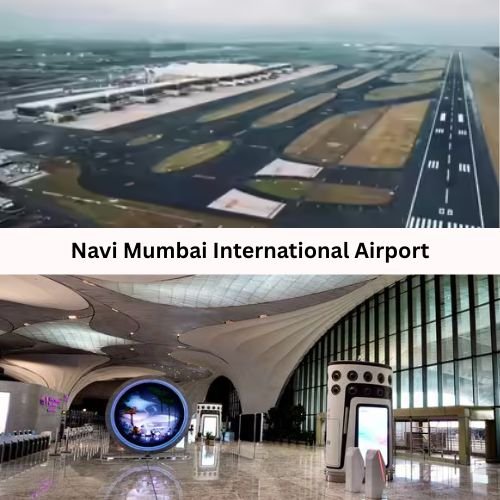
Punchline: A historic day for India’s aviation sector as Navi Mumbai International Airport (NMIA) promises to transform travel, trade, and connectivity in western India.
A Milestone for Indian Aviation
Prime Minister Narendra Modi officially inaugurated the Navi Mumbai International Airport (NMIA) on October 8, 2025, marking a turning point for India’s infrastructure and air travel sector. Designed to complement the overburdened Chhatrapati Shivaji Maharaj International Airport in Mumbai, the NMIA is expected to boost passenger traffic handling, international connectivity, and regional economic development.
The massive project, estimated at ₹19,650 crore, is being hailed as India’s next big aviation hub and one of the most advanced airports in Asia.
Key Features of the Navi Mumbai International Airport (NMIA)
- Capacity: Phase 1 of the airport will handle 20 million passengers annually.
- Connectivity: Integrated with road, rail, and metro links to ensure smooth access for travelers from Mumbai, Pune, and nearby regions.
- Ownership: Developed under a public-private partnership between CIDCO (26%) and Adani Airports / MIAL (74%).
- Name: Officially named after D. B. Patil, honouring the late leader’s contribution to Navi Mumbai’s development.
- World-Class Facilities: Designed to offer streamlined immigration and transit for connecting international flights, reducing travel time and hassle.
A Boost to Western India’s Economy
The opening of Navi Mumbai International Airport (NMIA) is expected to unlock new opportunities for tourism, trade, logistics, and exports across Maharashtra, especially benefiting cities like Pune, Pimpri-Chinchwad, Kolhapur, and Solapur. Civil Aviation Minister of State, Murlidhar Mohol, stated that the airport would create thousands of jobs and attract significant foreign investment to the region.
The Need for a Second Airport
Mumbai’s Chhatrapati Shivaji Maharaj International Airport has long been operating at full capacity, handling over 50 million passengers annually before the pandemic. The Navi Mumbai facility will ease congestion, ensuring faster turnarounds for airlines and better passenger experiences.
Strategic Significance
According to aviation experts, NMIA positions Mumbai as one of the few global metro regions with multiple international airports, enhancing its status as a financial hub and improving India’s competitiveness in global air travel markets. The airport also strengthens India’s aviation roadmap under the UDAN scheme and aligns with the government’s push for regional connectivit
Navi Mumbai International Airport (NMIA): PM Modi’s Vision
During the inauguration, Prime Minister Modi emphasized that the project reflects India’s commitment to modern infrastructure and efficient urban planning. He noted that NMIA will not only decongest Mumbai’s skies but will also open gateways for international tourists and businesses to explore western India.
Though inaugurated today, commercial operations at NMIA will begin in phases. By 2030, the airport is projected to handle 60 million passengers annually, making it one of the busiest hubs in Asia.
With its cutting-edge facilities and strategic location, the Navi Mumbai International Airport (NMIA) is set to become a landmark in India’s aviation journey—one that connects people, propels trade, and fuels regional growth.
FOR MORE BLOGS – beyondthepunchlines.com

 Add to favorites
Add to favorites








